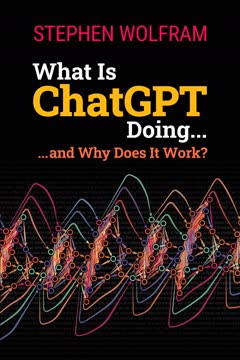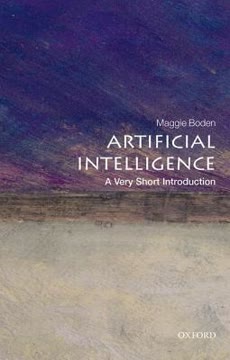نکات کلیدی
1. هوش مصنوعی: تعریف و درک دامنه آن
هوش مصنوعی تلاش میکند تا کامپیوترها را قادر سازد کارهایی را انجام دهند که ذهنها میتوانند انجام دهند.
کاربردهای گسترده. هوش مصنوعی شامل طیف وسیعی از فناوریها و رویکردها است، از استدلال نمادین تا شبکههای عصبی. کاربردهای آن همهجا حاضر است، از تلفنهای هوشمند و وسایل نقلیه خودران گرفته تا تشخیص پزشکی، پیشبینی مالی و حتی گالریهای هنری. هوش مصنوعی دو هدف اصلی دارد: فناوری (ایجاد ابزارهای مفید) و علمی (درک شناخت و زیستشناسی انسان).
زمینه تاریخی. حوزه هوش مصنوعی توسط آدا لاولیس در دهه 1840 پیشبینی شد و بهطور رسمی در اواسط قرن بیستم توسط پیشگامانی مانند آلن تورینگ آغاز شد. هوش مصنوعی اولیه بر استدلال نمادین و منطق متمرکز بود، در حالی که توسعههای بعدی شبکههای عصبی، الگوریتمهای تکاملی و رویکردهای دیگر را در بر گرفت. این حوزه دورههای اشتیاق و شک و تردید را تجربه کرده است که به عنوان "زمستانهای هوش مصنوعی" شناخته میشود، اما همچنان به پیشرفت و تأثیرگذاری بر رشتههای مختلف ادامه میدهد.
2. جستجو برای هوش عمومی مصنوعی (AGI)
هوش عمومی همچنان یک چالش بزرگ و بسیار گریزان است. AGI جام مقدس این حوزه است.
چالشهای AGI. در حالی که هوش مصنوعی در حوزههای خاص موفقیتهای چشمگیری کسب کرده است، ایجاد سیستمهایی با هوش عمومی شبیه به انسان همچنان یک چالش مهم باقی مانده است. AGI نیازمند ادغام قابلیتهای شناختی مختلف، از جمله استدلال، یادگیری، ادراک و درک عقل سلیم است. سیستمهای هوش مصنوعی کنونی در وظایف محدود عالی عمل میکنند اما با انعطافپذیری و سازگاری که ویژگی هوش انسانی است، مشکل دارند.
رویکردها به AGI. محققان استراتژیهای مختلفی را برای دستیابی به AGI دنبال کردهاند:
- هوش مصنوعی نمادین: تمرکز بر منطق و سیستمهای مبتنی بر قوانین
- شبکههای عصبی: تقلید از ساختار و عملکرد مغز انسان
- رویکردهای ترکیبی: ترکیب روشهای نمادین و ارتباطی
- الگوریتمهای تکاملی: استفاده از اصول انتخاب طبیعی برای تکامل سیستمهای هوشمند
با وجود پیشرفتها، AGI واقعی همچنان یک هدف دور است، با موانع تکنولوژیکی و مفهومی قابل توجهی که باید برطرف شوند.
3. پردازش زبان و خلاقیت در هوش مصنوعی
ترجمه ماشینی کنونی میتواند به طرز شگفتانگیزی موفق باشد.
پردازش زبان طبیعی. هوش مصنوعی در وظایف مرتبط با زبان پیشرفتهای قابل توجهی داشته است، از جمله:
- ترجمه ماشینی
- تشخیص گفتار
- خلاصهسازی متن
- سیستمهای پرسش و پاسخ
در حالی که این سیستمها میتوانند نتایج چشمگیری تولید کنند، اغلب فاقد درک واقعی از زبان و زمینه هستند. پردازش زبان طبیعی کنونی به شدت به روشهای آماری و یادگیری ماشینی متکی است تا تحلیل عمیق زبانی.
هوش مصنوعی و خلاقیت. سیستمهای هوش مصنوعی قابلیتهای خلاقانهای را در حوزههای مختلف نشان دادهاند:
- آهنگسازی موسیقی
- تولید هنر بصری
- نوشتن داستان
- طراحی بازی
با این حال، خلاقیت هوش مصنوعی اغلب بر اساس ترکیب الگوهای موجود است تا تولید ایدههای واقعاً جدید. ماهیت خلاقیت ماشینی سوالات فلسفی درباره جوهر خلاقیت انسانی و پتانسیل ماشینها برای خلاقیت واقعی را مطرح میکند.
4. شبکههای عصبی مصنوعی: تقلید از مغز
شبکههای عصبی مصنوعی جذاب هستند، زیرا بسیار متفاوت از ماشینهای مجازی هوش مصنوعی نمادین هستند.
ساختار و عملکرد. شبکههای عصبی مصنوعی (ANNs) از واحدهای متصل به هم تشکیل شدهاند که از نورونهای بیولوژیکی الهام گرفته شدهاند. آنها در تشخیص الگو، یادگیری از دادهها و مدیریت اطلاعات نویزی یا ناقص برتری دارند. ویژگیهای کلیدی ANNs شامل:
- نمایش توزیعشده
- پردازش موازی
- سازگاری از طریق یادگیری
انواع و کاربردها. انواع مختلفی از ANNs توسعه یافتهاند:
- شبکههای پیشخور
- شبکههای بازگشتی
- شبکههای عصبی پیچشی
- معماریهای یادگیری عمیق
این شبکهها در تشخیص تصویر و گفتار، پردازش زبان طبیعی، بازی و بسیاری از حوزههای دیگر کاربرد یافتهاند. در حالی که ANNs موفقیتهای چشمگیری کسب کردهاند، محدودیتهایی نیز دارند، مانند نیاز به مقادیر زیادی داده آموزشی و دشواری در توضیح فرآیندهای تصمیمگیری آنها.
5. رباتیک و زندگی مصنوعی: پل زدن شکاف
رباتها قرنها پیش ساخته شدند—توسط لئوناردو داوینچی و دیگران. نسخههای هوش مصنوعی در دهه 1950 ظهور کردند.
تکامل رباتیک. هوش مصنوعی به طور قابل توجهی بر حوزه رباتیک تأثیر گذاشته است، و امکان ایجاد ماشینهای پیچیده و خودمختارتر را فراهم کرده است. توسعههای کلیدی شامل:
- رباتیک موقعیتی: تأکید بر تعامل مستقیم با محیط
- رباتیک تکاملی: استفاده از الگوریتمهای ژنتیکی برای تکامل طراحی و رفتار رباتها
- رباتیک گروهی: هماهنگی تعداد زیادی از رباتهای ساده
زندگی مصنوعی. حوزه زندگی مصنوعی (A-Life) به بررسی سنتز و شبیهسازی سیستمهای زنده با استفاده از روشهای محاسباتی میپردازد. تحقیقات A-Life به درک موارد زیر کمک کرده است:
- خودسازماندهی در سیستمهای بیولوژیکی
- ظهور رفتارهای پیچیده از قوانین ساده
- پتانسیل ایجاد موجودات مصنوعی
زندگی مصنوعی و رباتیک در حوزههایی مانند رباتیک تکاملی و توسعه رباتهای الهام گرفته از زیستشناسی تلاقی میکنند، و مرزهای آنچه را که "زنده" و "هوشمند" میدانیم، به چالش میکشند.
6. پیامدهای فلسفی هوش مصنوعی
تصمیمگیری برای اعتبار دادن به AGIها با هوش واقعی در سطح انسانی—شامل اخلاق، آزادی و خود—گامی بزرگ با پیامدهای عملی قابل توجه خواهد بود.
ذهن و آگاهی. هوش مصنوعی سوالات فلسفی عمیقی درباره ماهیت ذهن، آگاهی و هوش مطرح میکند. مباحث کلیدی شامل:
- آیا ماشینها میتوانند واقعاً آگاه باشند؟
- رابطه بین هوش و آگاهی چیست؟
- آیا هوش مصنوعی قوی (ماشینهایی با درک واقعی) ممکن است؟
اخلاق و اخلاقیات. توسعه سیستمهای هوش مصنوعی با قابلیتهای شبیه به انسان نگرانیهای اخلاقی را برمیانگیزد:
- آیا باید به سیستمهای هوش مصنوعی وضعیت اخلاقی اعطا شود؟
- چگونه میتوانیم اطمینان حاصل کنیم که سیستمهای هوش مصنوعی به صورت اخلاقی رفتار میکنند؟
- پیامدهای هوش مصنوعی برای خودمختاری و تصمیمگیری انسانی چیست؟
این سوالات فلسفی پیامدهای عملی برای نحوه طراحی، استقرار و تعامل با سیستمهای هوش مصنوعی در آینده دارند.
7. تکینگی: پتانسیل و خطرات هوش مصنوعی فوقهوشمند
بسیاری از این پیشبینیها حتی چالشبرانگیزتر هستند. شاید جذابترین آنها پیشبینیهای کرزویل درباره زندگی در دنیای مجازی و حذف مرگ شخصی باشد.
مفهوم تکینگی. تکینگی فناوری به نقطه فرضی آیندهای اشاره دارد که در آن هوش مصنوعی از هوش انسانی پیشی میگیرد و منجر به رشد سریع و غیرقابل پیشبینی فناوری میشود. طرفداران استدلال میکنند که این میتواند منجر به:
- حل مشکلات عمده جهانی
- تمدید زندگی رادیکال یا حتی جاودانگی
- ادغام هوش انسانی و ماشینی
خطرات و نگرانیها. توسعه بالقوه هوش مصنوعی فوقهوشمند نگرانیهای قابل توجهی را برمیانگیزد:
- خطر وجودی برای بشریت
- از دست دادن کنترل انسانی بر فناوری
- پیامدهای اخلاقی موجودات مصنوعی بسیار برتر
در حالی که مفهوم تکینگی بحثبرانگیز است، نیاز به بررسی دقیق پیامدهای بلندمدت توسعه هوش مصنوعی را برجسته میکند. محققان در حال کار بر روی رویکردهایی برای اطمینان از "هوش مصنوعی دوستانه" هستند که با ارزشها و منافع انسانی همسو باشد، اما چالشهای قابل توجهی در پیشبینی و کنترل توسعه سیستمهای پیشرفته هوش مصنوعی باقی مانده است.
آخرین بهروزرسانی::
FAQ
What's "Artificial Intelligence: A Very Short Introduction" about?
- Overview of AI: The book provides a concise introduction to artificial intelligence (AI), exploring its nature, history, and future prospects.
- AI's Practical Applications: It discusses the various applications of AI in everyday life, from home and healthcare to finance and military.
- Scientific and Philosophical Aspects: The book delves into the scientific underpinnings of AI and its philosophical implications, including questions about consciousness and intelligence.
- Author's Expertise: Written by Margaret A. Boden, an expert in the field, it offers insights into both the technological and theoretical aspects of AI.
Why should I read "Artificial Intelligence: A Very Short Introduction"?
- Comprehensive Introduction: It offers a broad yet detailed overview of AI, making it suitable for both beginners and those with some prior knowledge.
- Expert Insights: Margaret A. Boden provides expert analysis and insights, drawing from her extensive experience in AI research.
- Current and Future Trends: The book discusses current applications and future possibilities of AI, helping readers understand its potential impact on society.
- Philosophical Exploration: It addresses philosophical questions about intelligence, consciousness, and the ethical implications of AI.
What are the key takeaways of "Artificial Intelligence: A Very Short Introduction"?
- Diverse Applications: AI is used in various fields, including healthcare, finance, and entertainment, demonstrating its versatility and impact.
- Scientific and Technological Goals: AI aims to both create useful technologies and enhance our understanding of human and animal intelligence.
- Philosophical Challenges: The book explores philosophical questions about the nature of intelligence and consciousness, highlighting ongoing debates.
- Future Prospects: It discusses the potential future developments in AI, including the concept of the Singularity and its implications.
What are the best quotes from "Artificial Intelligence: A Very Short Introduction" and what do they mean?
- "AI seeks to make computers do the sorts of things that minds can do." This quote encapsulates the primary goal of AI: to replicate or simulate human cognitive functions using machines.
- "Intelligence isn’t a single dimension, but a richly structured space of diverse information-processing capacities." It highlights the complexity of intelligence, suggesting that it involves multiple skills and processes.
- "AI has challenged the ways in which we think about humanity—and its future." This reflects on how AI forces us to reconsider our understanding of human nature and our future as a species.
How does Margaret A. Boden define artificial intelligence in the book?
- AI Definition: AI is defined as the effort to make computers perform tasks that require human-like cognitive abilities, such as reasoning and perception.
- Psychological Skills: It involves psychological skills like perception, association, prediction, planning, and motor control.
- Diverse Techniques: AI employs a variety of techniques to address different tasks, reflecting the complexity of intelligence.
- Everywhere in Society: AI is pervasive, with applications in homes, cars, offices, and even in space exploration.
What are the major types of AI discussed in the book?
- Classical AI (GOFAI): This involves symbolic processing and logic-based approaches to mimic human reasoning.
- Neural Networks: These are inspired by the human brain and focus on pattern recognition and learning.
- Evolutionary Programming: This method uses algorithms inspired by biological evolution to solve problems.
- Hybrid Systems: These combine different AI approaches to leverage their respective strengths.
What is the significance of the Turing Test according to the book?
- Turing Test Overview: Proposed by Alan Turing, it assesses a machine's ability to exhibit intelligent behavior indistinguishable from a human.
- Philosophical Implications: The test raises questions about the nature of intelligence and consciousness.
- Criticism and Debate: Many philosophers argue that passing the Turing Test doesn't necessarily prove true intelligence or consciousness.
- AI's Practical Focus: Despite its philosophical interest, the Turing Test is not a primary focus for most AI research, which aims at practical applications.
How does the book address the concept of the Singularity?
- Singularity Defined: The Singularity refers to a hypothetical future point where AI surpasses human intelligence, leading to rapid technological growth.
- Diverse Opinions: The book presents both optimistic and pessimistic views on the Singularity's potential impact on humanity.
- Existential Risks: Some believe the Singularity could pose existential threats, while others see it as an opportunity for unprecedented progress.
- Current Feasibility: The book suggests skepticism about the Singularity's imminence, given the current state of AI technology.
What role does creativity play in AI according to the book?
- Types of Creativity: AI can exhibit combinational, exploratory, and transformational creativity, each involving different processes.
- AI's Creative Achievements: The book discusses AI's ability to generate novel ideas and artifacts, such as art and music, that are valuable and surprising.
- Human-AI Collaboration: AI can assist human creativity by providing new tools and perspectives, enhancing artistic and scientific endeavors.
- Limitations and Challenges: Despite its achievements, AI's creative capabilities are still limited compared to human creativity.
How does the book explore the relationship between AI and emotion?
- Emotion in AI: The book discusses efforts to model emotions in AI systems, particularly for applications like computer companions and social robots.
- Functional Role: Emotions are seen as important for decision-making and behavior scheduling in both humans and AI.
- Ethical Considerations: The use of AI in emotionally sensitive contexts, such as caregiving, raises ethical questions about empathy and human dignity.
- Theoretical Depth: While some AI models of emotion are commercially driven, others aim to deepen our understanding of the mind's architecture.
What philosophical questions about intelligence and consciousness does the book raise?
- Nature of Intelligence: The book questions what constitutes true intelligence and whether machines can possess it.
- Consciousness Debate: It explores whether AI can ever achieve consciousness, particularly phenomenal consciousness or qualia.
- Mind-Body Problem: The book discusses the implications of viewing the mind as a virtual machine implemented in the brain.
- Moral and Ethical Implications: It considers the moral standing of AI systems and their potential inclusion in the moral community.
What are the potential risks and ethical concerns associated with AI as discussed in the book?
- Technological Unemployment: AI's impact on jobs and the economy is a significant concern, with potential for widespread unemployment.
- Privacy and Security: The use of AI in data collection and surveillance raises issues of privacy and cyber security.
- Military Applications: The development of autonomous weapons and AI in warfare poses ethical and safety risks.
- Human Dignity: The book questions the ethical implications of using AI in caregiving and companionship, particularly for vulnerable populations.
نقد و بررسی
کتاب هوش مصنوعی: مقدمهای بسیار کوتاه نظرات متفاوتی را به خود جلب کرده است. بسیاری از خوانندگان به خاطر مرور جامع و دیدگاه تاریخی آن در مورد هوش مصنوعی، آن را جذاب و تفکر برانگیز میدانند. با این حال، برخی دیگر به دلیل چگالی و زبان فنی آن انتقاد کرده و آن را برای مبتدیان چالشبرانگیز مییابند. خوانندگان از پوشش وسیع مفاهیم هوش مصنوعی، اخلاق و پیامدهای آینده آن قدردانی میکنند. مباحث کتاب در مورد آگاهی و تکینگی بهویژه به عنوان موضوعاتی جالب مورد توجه قرار گرفته است. در حالی که برخی آن را مقدمهای عالی میدانند، دیگران پیشنهاد میکنند که ممکن است برای افرادی که پیشزمینهای در زمینه هوش مصنوعی دارند، مناسبتر باشد.
Very Short Introductions Series Series

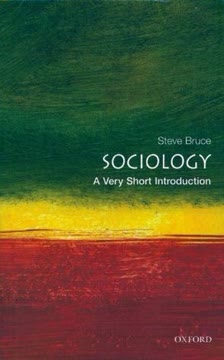

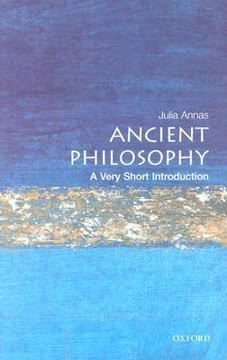
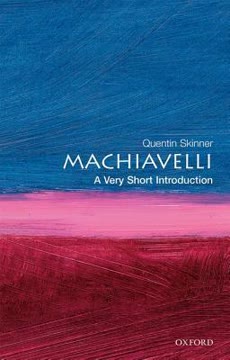


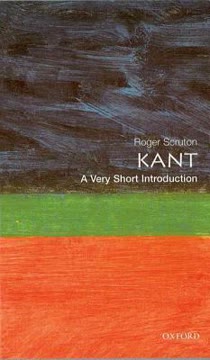
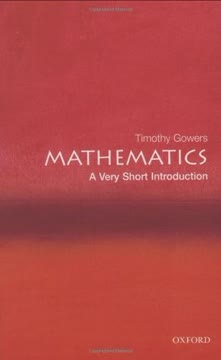
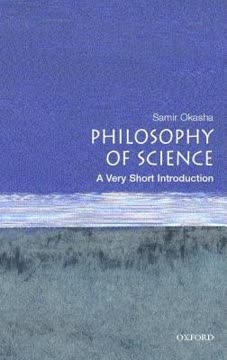


Similar Books
